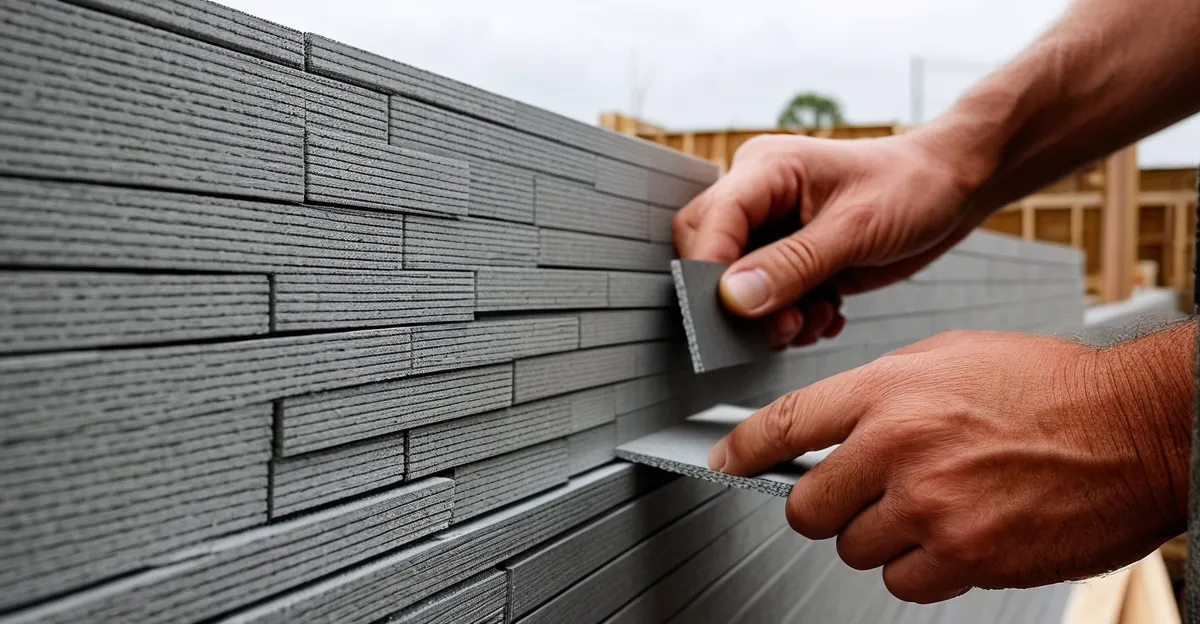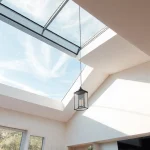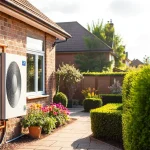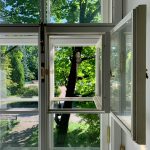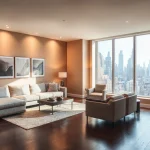Fibre cement boards combine durability, moisture resistance, and versatility, meeting diverse construction needs. Their strength supports various finishes, from tiles to vinyl, while maintaining stability in challenging environments. Understanding these advantages helps builders and DIYers choose the right material for walls, ceilings, or floors, ensuring lasting performance without compromising on quality or cost.
Fibre cement board essentials: definition, properties, and primary uses
When it comes to modern construction, Fibre Cement Boards stand out for their blend of durability and versatility. These boards combine cement with cellulose fibres, resulting in a robust sheet material available in multiple thicknesses—commonly 6mm, 8mm, 9mm, 12mm, and 18mm—catering to varied building requirements from floors to walls and ceilings.
Also to read : Basement construction in chelsea: maximize your home space
A highlight of these boards is their A1 fire rating, confirming non-combustibility and making them suitable for safety-critical areas, such as fireplace surroundings or commercial spaces. Their high moisture and mould resistance ensures long-term performance, even in wet zones like bathrooms, kitchens, or outdoor cladding. They are engineered for resistance to rot and weather, delivering greater security against the elements and structural movement compared to plywood or plasterboard.
Common practical uses include supporting tile installations, serving as wall and ceiling cladding, providing a secure base under flooring, and acting as a durable backer in high-traffic or damp environments. Thanks to their thermal properties and load-bearing strength, they perform well in both residential and commercial spaces, offering peace of mind with minimal ongoing maintenance.
In parallel : Expert kitchen fitters in maidstone: transform your home today
Product options, availability, and brand comparisons
Fibre cement boards are available in a wide range of sizes, thicknesses, and brands to suit both commercial and residential needs. Common dimensions include 6mm, 8mm, 9mm, 12mm, and 18mm thicknesses, with standard board sizes frequently measuring 1.2m x 2.4m or 8×4 feet. These options enable flexibility for projects ranging from internal partition walls to external cladding, soffits, and wet areas.
Well-known brands such as James Hardie, Shera, No More Ply, and Cladco are trusted for consistency, resilience, and ease of installation. Premium products like Hardie Backer and Cladco’s exterior backer board are recognised for their fire resistance, moisture control, and durability, critical when safety and longevity are priorities.
Supplier availability varies—with fibre cement boards found at reputable builders’ merchants, hardware stores, and online platforms. Sourcing locally may offer quicker access but sometimes limited thickness or size choices. Factors affecting fibre cement board prices include board thickness, brand, finish, and order quantity. Boards boasting high impact resistance, minimal water absorption, and fire ratings (e.g., A1) command a premium but deliver peace of mind and reduced maintenance costs. When choosing your supplier, always confirm inventory status and expected delivery times to avoid project delays.
Installation, Handling, and Best Practice Guidelines
Safe Handling, Cutting, and Dust Control Precautions
Precision: Use appropriate lifting techniques or team handling for fibre cement boards, as their weight varies by thickness—ranging from 35.95kg to 119.2kg. Always wear gloves to avoid abrasions and utilize safety goggles and dust masks, particularly during cutting. Cutting thinner boards (up to 9mm) is achievable with a scoring knife, while thicker boards require a circular saw with dust extraction. Dry saw cutting can generate hazardous dust; always opt for wet cutting or score-and-snap methods to minimize risk.
Installation Techniques: Adhesives, Screws, Mesh Tape, Staggered Joints, Tool Recommendations
For secure installation, choose between rapid-set flexible adhesives, countersunk screws, or mesh tape with thin-set mortar. Select tool types based on board thickness: use a sharp utility knife for score-and-snap, or a circular saw equipped with dust control for thicker panels. Stagger board joints in a brick-bond pattern, improving strength and surface regularity while reducing weak points. Countersink screws and follow manufacturer torque settings to prevent overdriving and damage.
Board Fixing, Edge Sealing, and Weatherproofing for Optimal Performance
Apply flexible sealant along all board edges and at joint lines to maximize weather and water resistance. Fix boards with stainless steel screws or corrosion-resistant fasteners, spaced as specified in the manufacturer’s guide. For exterior or wet-area installations, do not skip joint taping and sealing, essential for long-term durability.
Maintenance and Repair: Routine Checks, Cleaning, Patching, and Extending Board Lifespan
Maintain fibre cement cladding with periodic checks for cracks, movement, or sealant wear. Clean using mild detergent and a soft brush—avoid high-pressure washing. For minor damage, use recommended patching compounds. Timely upkeep and correct repairs can help boards provide decade-long performance, even in moisture-prone or heavily used environments.
Comparisons, Specialised Applications, and Considerations
Fibre cement board vs. alternative cladding and substrate materials
Fibre cement boards provide a robust, moisture-proof, and non-combustible solution compared to plywood, plasterboard, or vinyl. While plywood is prone to warping, mould, and rot in damp environments, fibre cement resists both water and fungal attack, extending service life even under challenging conditions. Plasterboard, although lighter, lacks durability and is unsuitable for exterior installations or wet rooms. Vinyl, though low-maintenance and weather-resistant, does not match the impact resistance and fire safety of fibre cement—a key concern for both interior and exterior wall applications.
Cost comparison, long-term value, and environmental considerations
Initial outlay for fibre cement siding or boards may exceed that of plywood or vinyl alternatives, but maintenance requirements and longevity shift the cost equation. Resistant to fire, rot, and water damage, these boards demand fewer repairs and rarely necessitate full replacement within a decade. In analysing cladding cost per m², fibre cement often provides a lower lifetime expense. Additionally, many boards, such as those from Licata, are manufactured to eco-friendly standards and designed for minimal ongoing maintenance.
Specialised applications: fire resistance, soundproofing, insulation, and sustainability
Fibre cement’s A1 fire rating and acoustic dampening properties (as with Licata’s Multipurpose boards) support use in high-risk or high-traffic buildings. Its dimensional stability and thermal resistance make it compatible with insulation upgrades, supporting soundproofing, fireproofing, and energy efficiency in renovation and new builds.

